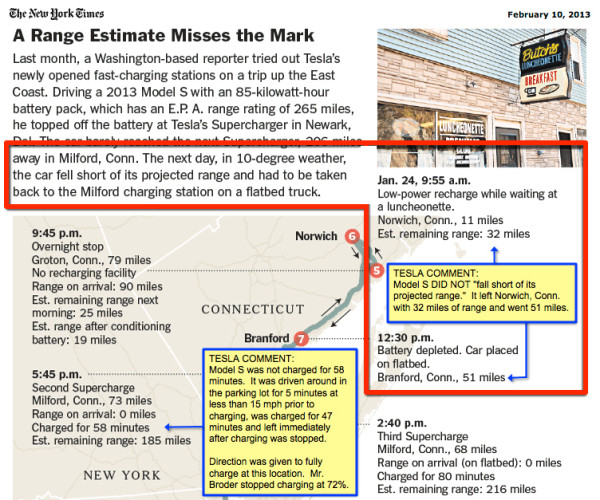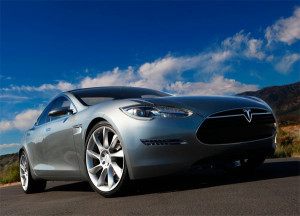We recently reported that after a scathing review of Tesla’s Model S in New York Times, Tesla’s CEO, Elon Musk claimed that the review was based on inaccurate data. Now he has provided the data logs to prove his claim and in the light of this data, it seems that NYT’s reporter was determined to give the impression that the car didn’t perform well enough.
John Broder, the reviewer for NYT, had pointed out in his review that the car fell short of the stated range that it was supposed to cover after a recharge. And that he was left stranded 25 miles away from the nearest recharge station. Musk has produced the actual log data of his entire drive which clearly indicates that Broder’s claims are either misguided exaggerations or plain falsities.
According to Musk, Broder didn’t even recharge the vehicle fully and when the indicator stated that the car could go only 32 miles on an incomplete recharge, while he set off for a 61 miles journey. This, Musk writes, was done “in obvious violation of common sense.”
Moreover, Musk reveals that although the indicator kept telling Broder that the car was low on charge, he drove right past a recharge station and eventually, had himself stranded in the middle of nowhere. In doing so, Musk says, the blame rests entirely on Broder who shouldn’t have been provided access to the car in the first place for his obvious disdain of electric cars.
Concluding his solid rebuttal, Elon Musk demanded that NYT must investigate after this incidence and see that why such a purposefully scathing review about a recent Tesla model was penned down by one of its reporters.
According to him, “Our request of The New York Times is simple and fair: please investigate this article and determine the truth. You are a news organization where that principle is of paramount importance and what is at stake for sustainable transport is simply too important to the world to ignore.”
Source: Tesla Motors
Courtesy: Engadget
[ttjad keyword=”htc-phones”]




